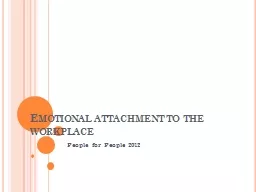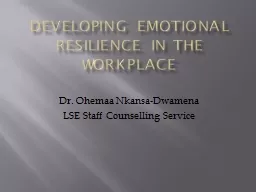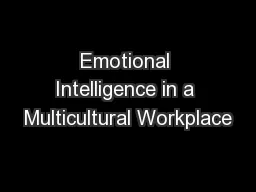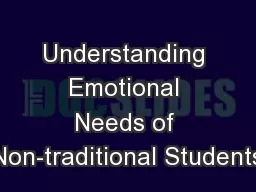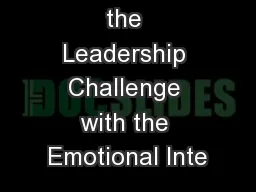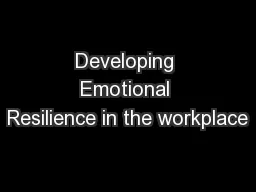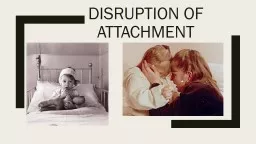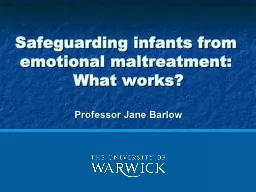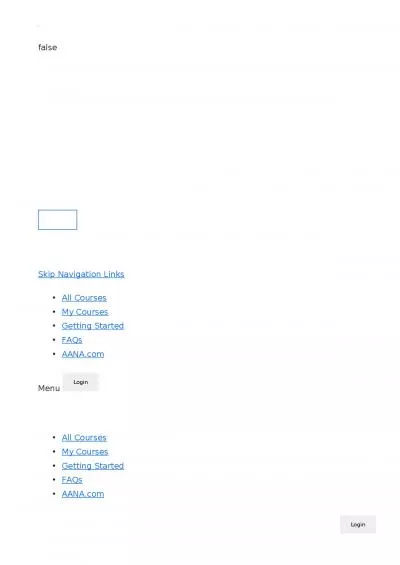PPT-Emotional attachment to the workplace
Author : test | Published Date : 2016-08-13
People for People 2012 workplace and the community A survey of 3841 residents of a major Canadian metropolitan city conducted in the spring of 2012 found 13 of respondents
Presentation Embed Code
Download Presentation
Download Presentation The PPT/PDF document "Emotional attachment to the workplace" is the property of its rightful owner. Permission is granted to download and print the materials on this website for personal, non-commercial use only, and to display it on your personal computer provided you do not modify the materials and that you retain all copyright notices contained in the materials. By downloading content from our website, you accept the terms of this agreement.
Emotional attachment to the workplace: Transcript
Download Rules Of Document
"Emotional attachment to the workplace"The content belongs to its owner. You may download and print it for personal use, without modification, and keep all copyright notices. By downloading, you agree to these terms.
Related Documents

